[Evangelion Pilgrimage] Ube-Shinkawa Station and Yamaguchi References in Evangelion: 3.0+1.0 Thrice Upon a Time
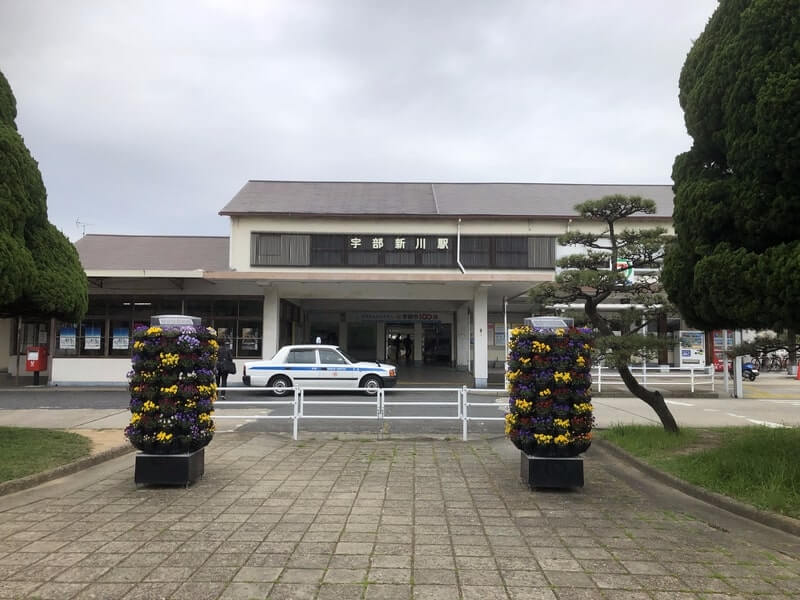
For residents of Yamaguchi Prefecture, the deep connection to Evangelion can be seen as a unique privilege.
The series’ creator and chief director, Hideaki Anno, hails from Ube City, Yamaguchi Prefecture. Since the original TV series through to the new theatrical versions, Evangelion has frequently included references and nods to Yamaguchi Prefecture.
The culmination of this connection is evident in the recently concluded Evangelion: 3.0+1.0 Thrice Upon a Time, where Yamaguchi Prefecture plays a prominent role, cementing the bond between the series and the region. Fans of Evangelion have every reason to celebrate and take pride in this unique relationship!
In a surprising and memorable finale, Ube-Shinkawa Station makes a live-action appearance in Evangelion: 3.0+1.0 Thrice Upon a Time. At this iconic location, we see none other than Shinji, Mari, Asuka, Rei, and Kaworu, bringing a poignant close to the saga.
This time, I’d like to introduce the Ube-Shinkawa Station as it appeared in the film, highlight other Evangelion-related references in Yamaguchi Prefecture, and share some fun tidbits I personally uncovered as a die-hard Evangelion fan and editor.
Let’s dive into the fascinating connections between Evangelion and Yamaguchi, and uncover the hidden gems sprinkled throughout the series!
この記事の目次
Ube-Shinkawa Station: Catapulted to Fame Overnight Thanks to Evangelion
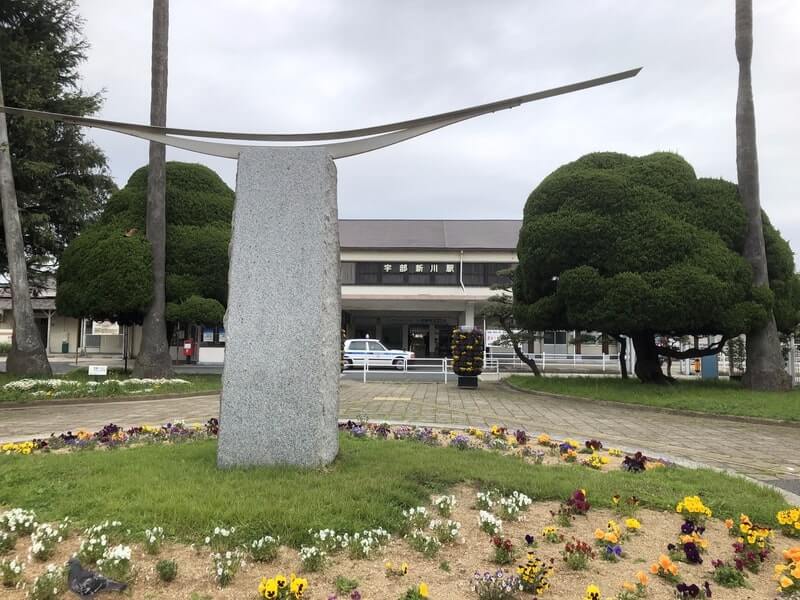
映
The “Third Village” and Its Yellow Guardrails
In the early part of the movie, the key location known as the “Third Village” is introduced. When the yellow guardrails appeared on screen, my excitement skyrocketed as I thought, “Could this village be inspired by Yamaguchi Prefecture?!”
Unfortunately, it turned out to be based on a different location. However, the appearance of this subtle detail so early in the film raised my hopes that more Yamaguchi references might be on the way. And sure enough, as the movie progressed… well, you’ll have to see for yourself!
Finally, Ube-Shinkawa Station came out!
I watched the movie at a theater in Yamaguchi Prefecture, and as soon as Ube-Shinkawa Station appeared on screen, it was clear that I wasn’t the only one who noticed. The audience immediately reacted, and a buzz of excitement filled the room.
Later, I checked social media and found that some fans had recognized the station even earlier—at the moment they heard its distinct departure melody. It’s incredible how these small yet significant details connected viewers to the real-world location, creating a unique and memorable experience for Evangelion fans in Yamaguchi and beyond!
Even before the movie’s release, keen-eyed fans noticed that the tracks near Ube-Shinkawa Station were featured on promotional posters. This led some die-hard fans to speculate, “Could Ube-Shinkawa Station actually appear in the film?”
But no one could have anticipated just how significant its role would be. Not only did the station appear in live-action, but it also became the backdrop for the emotional finale, with the main characters—Shinji, Mari, Asuka, Rei, and Kaworu—coming together at Ube-Shinkawa Station to close the story.
It was a moment that went beyond fan predictions, delivering an unforgettable tribute to Yamaguchi Prefecture and Hideaki Anno’s roots. A true gift for fans and a testament to the deeply personal touch woven into Evangelion!
Signed Poster by Director Hideaki Anno Inside the Station

When I visited in mid-April, standing on the bus terminal side of the station and looking toward the tracks, I was struck by a wave of recognition—it was exactly the scene I had seen in the movie. The real-life setting perfectly mirrored the cinematic moment, and I couldn’t help but feel overwhelmed.
As I stepped into the station, already filled with emotion, I noticed a poster for Evangelion: 3.0+1.0 near the ticket gate. It was a surreal and heartwarming moment to see the tribute to the film displayed in such a significant place. For any Evangelion fan, this visit would undoubtedly be an unforgettable experience.
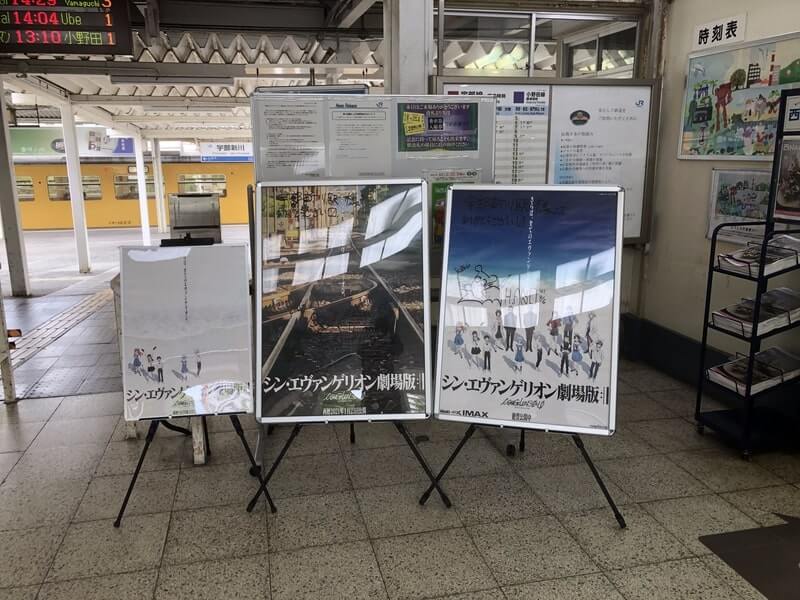
To my amazement, the poster near the ticket gate features a handwritten signature by Director Hideaki Anno himself!
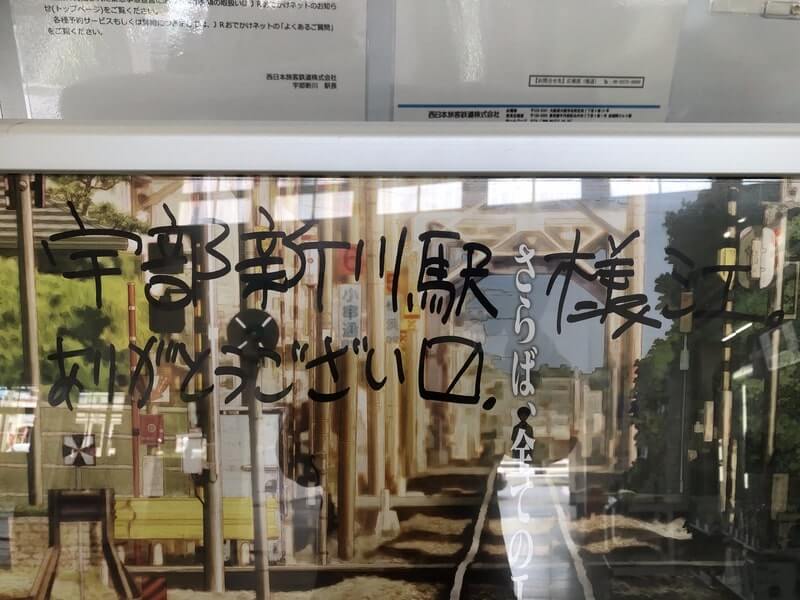
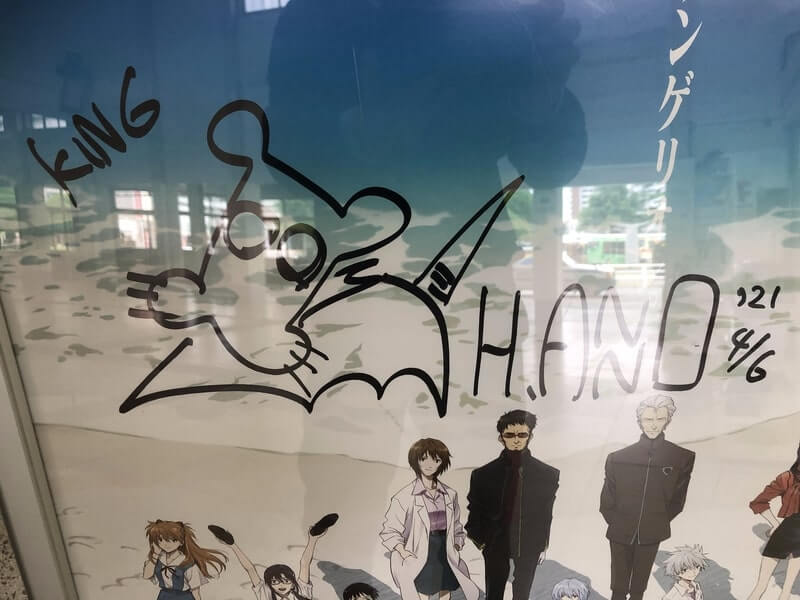
Stepping onto the Platform, Fueled by Excitement
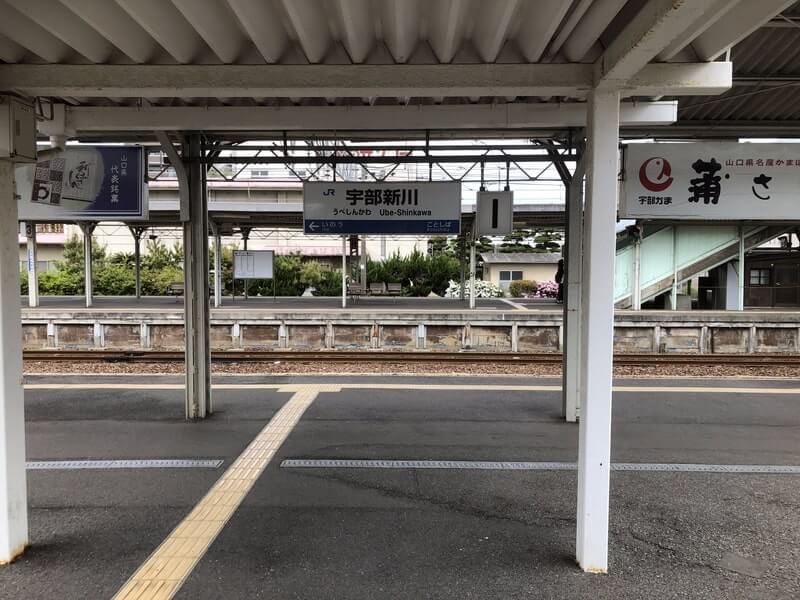
Entering the Ticket Gate: The “Ube-Shinkawa Station” Sign
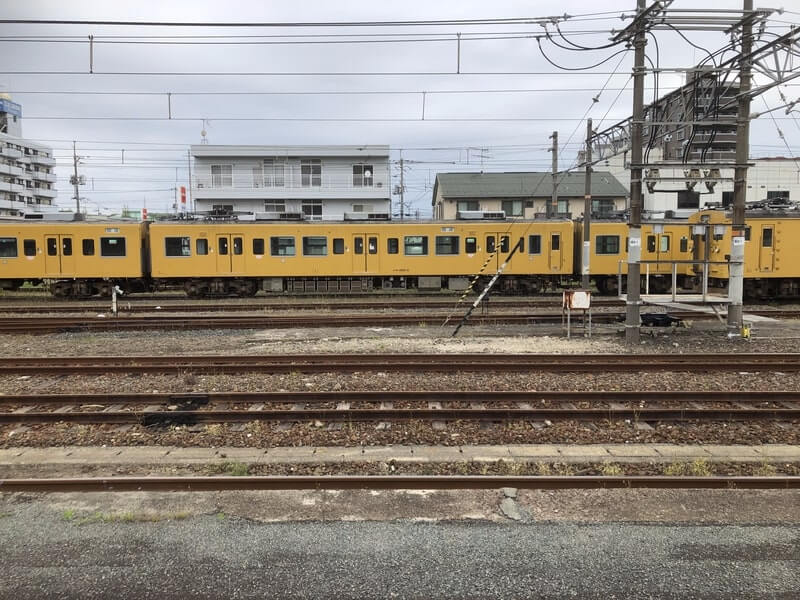
The Yellow Train: Straight Out of the Movie
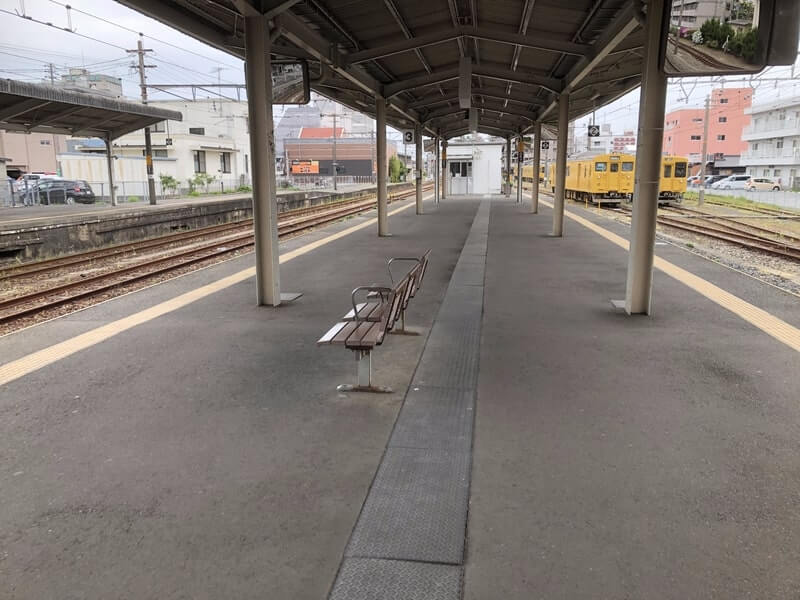
As I walked toward the back platform, I spotted the very bench where Shinji sat in the movie. Seeing it in person was a truly surreal moment, as if I’d stepped right into the scene.
Even though it was a weekday, I wasn’t alone in my excitement. A young couple who had traveled from outside the prefecture was also exploring the station, just like me, taking photos and soaking in the atmosphere. It was a reminder of how far-reaching Evangelion’s impact is, drawing fans from all over to experience this special place
The Staircase Where Shinji and Mari Held Hands
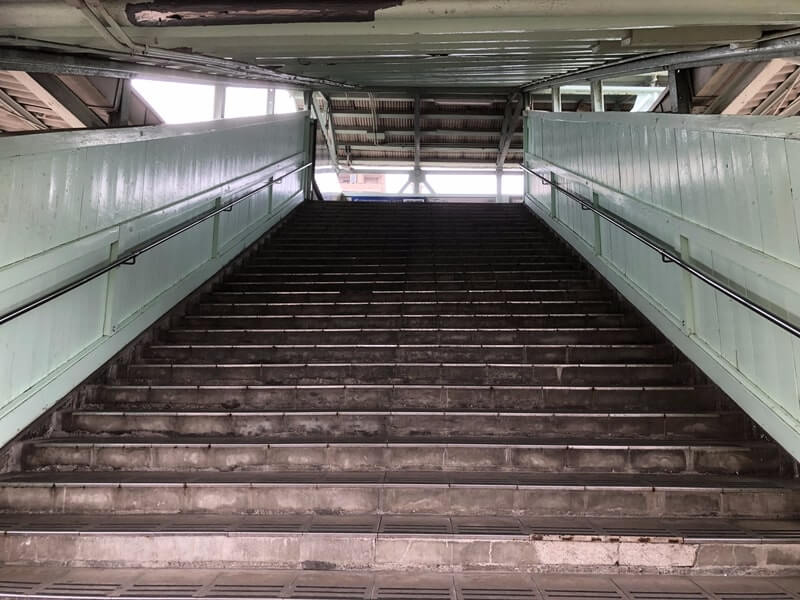
This was also used exactly as it appeared in the final scene. It’s the staircase where the two ran hand in hand, ascending into the real world.
Where Was That Poster Taken?
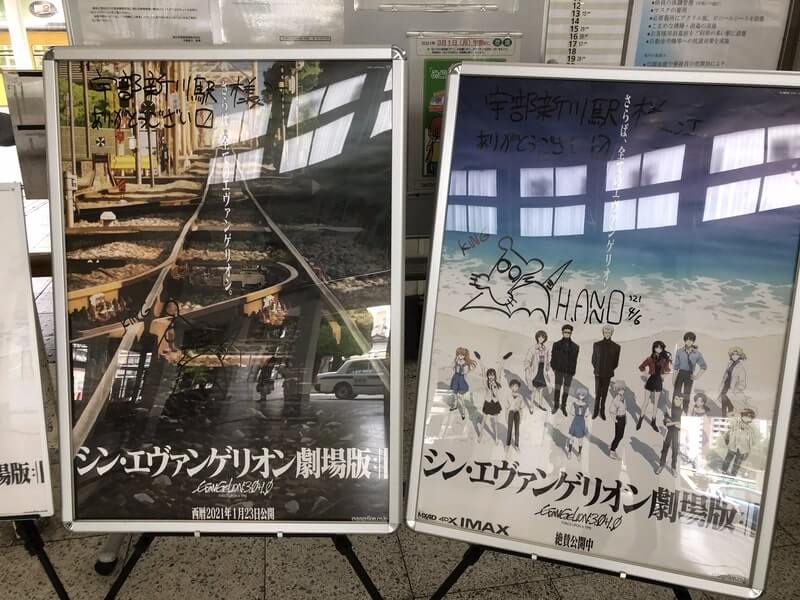
And as for the intriguing tracks depicted in the pre-release poster, it has been confirmed that this location is also modeled after an area near the station.

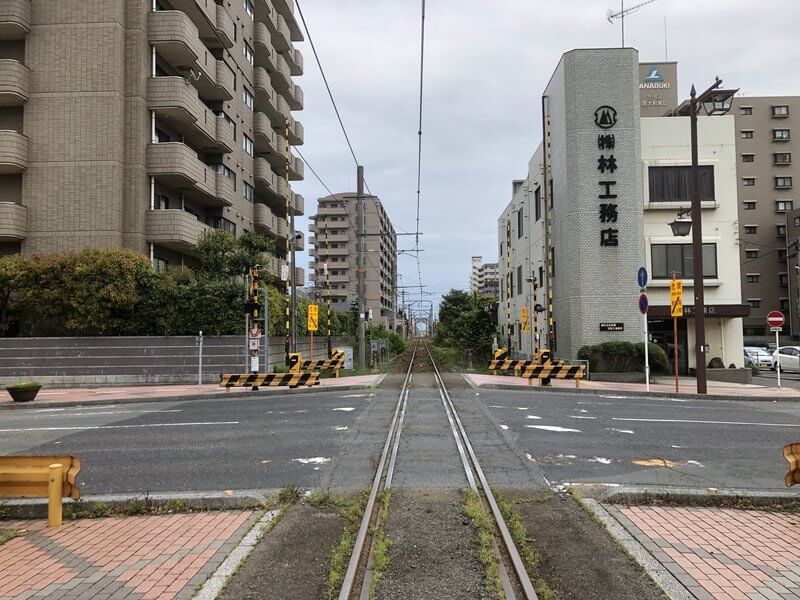
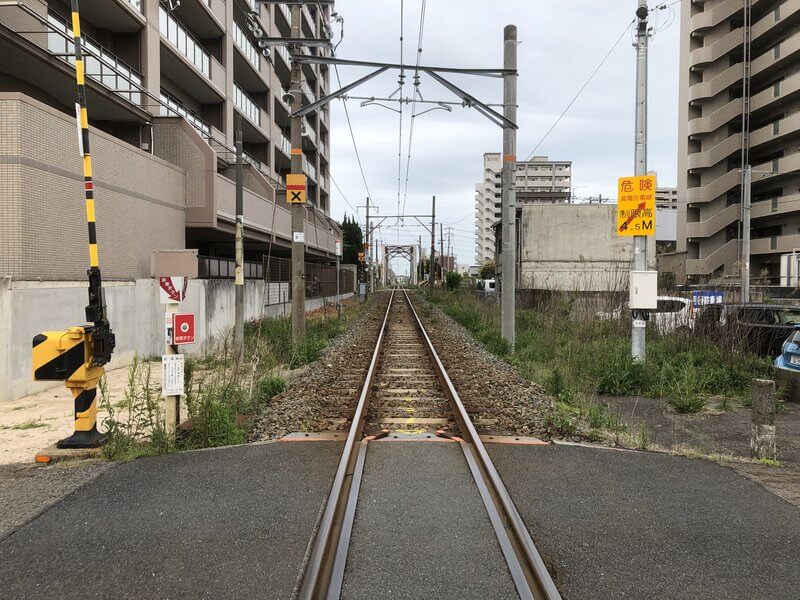 It is believed that this poster’s concept originated from capturing the view in sequence from above, gradually focusing on the subject.
It is believed that this poster’s concept originated from capturing the view in sequence from above, gradually focusing on the subject.
Eva-Related Spots Near the Station
The area around Ube-Shinkawa Station features several other Evangelion-related references.
Ikkyū Ramen
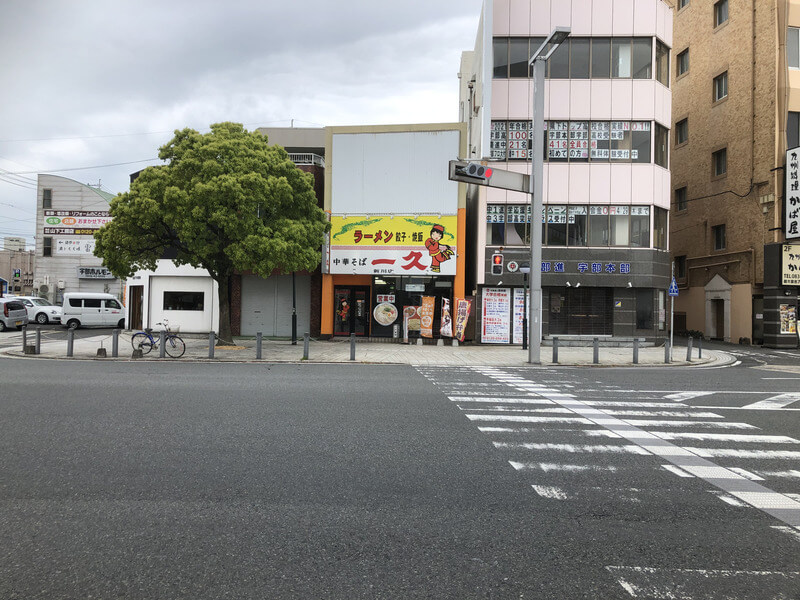
This is Ikkyū Ramen, located just across the street from Ube-Shinkawa Station. Known locally as “Ube Ramen,” it’s a beloved ramen chain in the area.
Interestingly, Ikkyū Ramen makes a subtle appearance in Evangelion, featured as the cup ramen seen in the original TV series and in Evangelion: 1.0 You Are (Not) Alone.
If you visit, be sure to stop by and enjoy a bowl of their delicious ramen—it’s a treat for both your taste buds and your Evangelion fandom!
Ube Industries (Ube Kōsan)
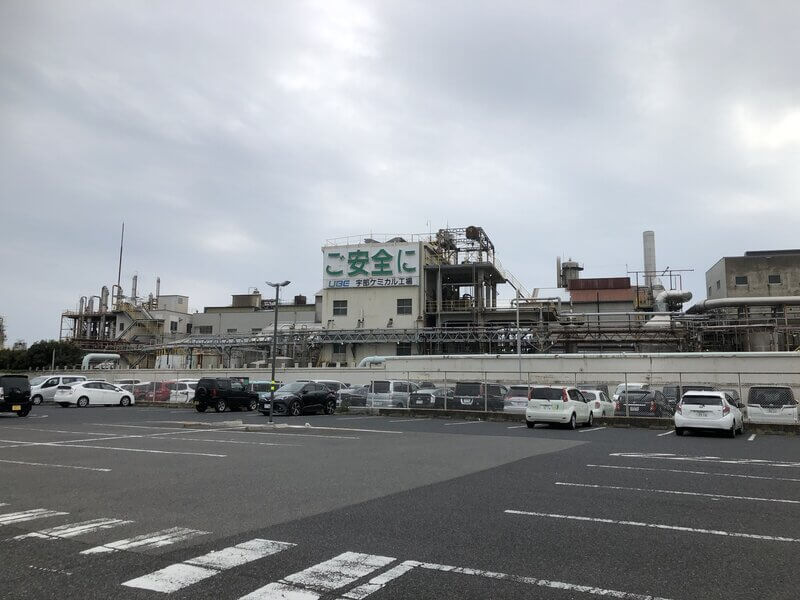
About a 10-minute walk southwest from Ube-Shinkawa Station, you’ll find Ube Industries (Ube Kōsan). This major Japanese chemical manufacturer is one of the most prominent companies in Yamaguchi Prefecture, representing the region’s industrial strength and innovation.
For visitors exploring the area, Ube Industries stands as a testament to the city’s industrial heritage, offering a fascinating glimpse into the local roots that influenced Evangelion creator Hideaki Anno.
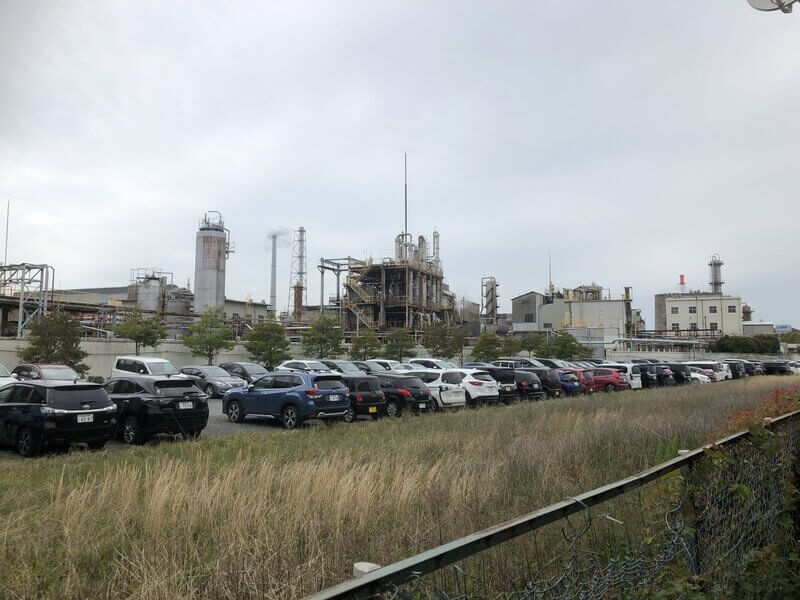
It’s often said that the industrial landscapes of Ube Industries served as the model for the factory settings depicted in Evangelion.
Lesser-Known Evangelion References to Yamaguchi Prefecture
“Yamane Iron Works & Construction Co., Ltd.” in the End Credits
After the main story concludes, pay attention to the end credits. You’ll notice the name “Yamane Iron Works & Construction” listed.
Yamane Iron Works & Construction is a company based in Nagato City, Yamaguchi Prefecture, and it is said that during the production of Evangelion: 3.0+1.0, they were asked to provide materials related to a specific detail. That’s why their name appears in the credits.
Additionally, Yamane Iron Works & Construction is the main sponsor of the women’s 7-a-side rugby team, the Nagato Blue Angels. Interestingly, the team’s logo and match jersey design were created by Studio Color, the company led by Director Hideaki Anno.
この投稿をInstagramで見る
It’s fascinating to discover such a unique connection.
As an additional note, next to the Nagato Blue Angels’ clubhouse is a multi-purpose sports facility called SWEET AS. Inside, you’ll find a display of Evangelion Unit-01. If you’re a fan, it’s definitely worth visiting in person. (As of May 6, 2021, this information was accurate, but the display may have since been removed.)
Exploring these connections makes the Evangelion experience even more special and shows how deeply rooted the series is in the local culture of Yamaguchi Prefecture.
この投稿をInstagramで見る
Other small bits of information.
From here on, I’ll share some small tidbits and trivia I noticed or researched after watching, which may not necessarily be related to Yamaguchi Prefecture. Apologies if you’re already familiar with them!
The Surprisingly Gentle Asuka
In the Third Village, Asuka appears cold and harsh toward Shinji, to the point where it can feel a bit difficult to watch. However, there’s more to her behavior than meets the eye.
At Kenken’s house, when Shinji vomits after seeing the DSS Choker on Asuka’s neck, she initially brushes it off with a cutting remark: “So you react to the DSS Choker, huh?” Her words may seem dismissive, but later on, her actions reveal a different story.
When Shinji returns after running away, Asuka subtly hides the DSS Choker by wrapping a scarf around her neck. This thoughtful gesture ensures that Shinji won’t be triggered into vomiting again. It’s a quiet but deeply considerate act that shows her underlying care for him, even if she struggles to express it openly.
The Name of the Doll Rei Ayanami Was Holding
When Shinji encounters Rei while trapped in Unit-01, he notices the baby doll Rei is holding. On the doll’s face is the word “Tsubame” (swallow).
This suggests that the consciousness of the so-called “Kuronami” (the “black Rei”), who dissolved into LCL, was resonating and synchronized with Rei at that moment.
Mari’s Glasses
In the final scenes, when Mari returns from Minus Space and dives into the blue ocean where Shinji is waiting, the glasses Mari surfaces with have reverted to the same pair she wore when she parachuted down and first met Shinji in Evangelion: 2.0 You Can (Not) Advance.
The model for the Third Village.
The “Shinjohara Station” in the Third Village is modeled after Tenryu-Futamata Station in Hamamatsu City, Shizuoka Prefecture.
When the yellow guardrails, unique to Yamaguchi Prefecture, appeared in the Third Village’s scenery, I couldn’t help but wonder if the terraced rice fields were also from Yamaguchi. However, it turns out they are modeled after Oyama Senmaida in Kamogawa City, Chiba Prefecture.
As for the industrial area shown in the scene where Shinji is riding in Kensuke’s car, I can’t help but hope it’s modeled after Ube Industries. If that were the case, it would be amazing!
He is riding in Unit-13.
In Minus Space, the pose of Unit-13 sitting on the building while awaiting Shinji is very similar to Kaworu’s characteristic sitting style. → Later, during a stage greeting by the directors, it was revealed that “Unit-13 is a double-entry, and the other pilot is Kaworu.” So this pose is likely a representation of that.
Here’s another tidbit mentioned during the stage greeting:
In the scene where Asuka is drawn toward the original Asuka piloting Unit-13, a small figure (or shadow) of Kaworu can be seen.
Totoro in the Library
I didn’t notice it the first time I watched, but I caught it on my second viewing.
In the same library scene, the book that Kuronami receives from the young girl is a work by Moyoco Anno. It also makes an appearance in the poster for the Third Village.
In closing
It’s been nearly two months since the release of the movie. In its first 49 days, Evangelion: 3.0+1.0 Thrice Upon a Time surpassed 5.23 million attendees and earned over 8 billion yen at the box office.
The film is filled with intricate callbacks and resolutions to previous storylines, resulting in an incredible experience. For residents of Yamaguchi Prefecture, the movie was especially delightful, with many local references. According to Director Hideaki Anno, “It’s composed of things that were part of my life and things I love.”
It’s rare to find a film that sparks such widespread analysis and discussion among fans, or so I personally believe.
If you haven’t seen it yet, I highly recommend watching it at the theater. After seeing it, you’ll undoubtedly want to visit Ube-Shinkawa Station!
Basic Information
Name: Ube-Shinkawa Station
Address: 3 Wakamatsu-cho, Ube City, Yamaguchi Prefecture, 755-0061
Parking: Available (paid)
Other Facilities: Restrooms and convenience store available

